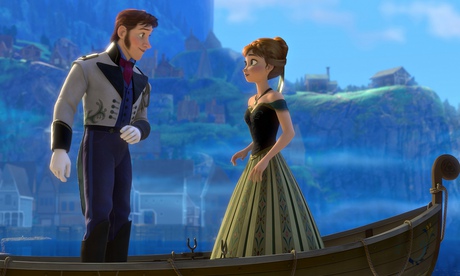In an extended opening image, as beautiful as it is useful, Marina Warner asks us to imagine the history of fairytale as a world map. The two beacons – and the term is used properly here, rather than as a hyperbolic adjective – are Charles Perrault in Paris and the Grimms in Saxony. At first, the dazzle coming from the former’s Tales of Olden Times (1697) and the latter’s Children and Household Tales (1812-57) is so intense that it blots out everything else. Gradually, though, your vision settles and, far to the east, you can now make out The Tales of the Thousand and One Nights which form deep “aquifers of story” that gush out in the talkative meeting places of the world: Venice, Marseilles, Madrid. Meanwhile, to the north, there’s a smoky mist curling from Hans Andersen’s Denmark to Alexander Afanasyev’s Russia. Warner, who is never afraid of asking her readers to work hard, then suggests turning this atlas into an advent calendar.
Through each little window there’s a storyteller busy gathering and reimagining these tales for a new audience. Over there is Andrew Lang who made fairyland safe for the Victorian nursery by purging it of anything disturbing. Through the Celtic window you can make out Speranza Wilde and her son Oscar and in the middle European corner are Freud and Jung. Moving closer to our time, Italo Calvino and Angela Carter each have a window. And then there are all those bedtime storytellers, therapists, circus artists, couturiers and Hollywood film directors who have taken the fairytale and pushed and pulled it into new shapes of their own devising.
More
Through each little window there’s a storyteller busy gathering and reimagining these tales for a new audience. Over there is Andrew Lang who made fairyland safe for the Victorian nursery by purging it of anything disturbing. Through the Celtic window you can make out Speranza Wilde and her son Oscar and in the middle European corner are Freud and Jung. Moving closer to our time, Italo Calvino and Angela Carter each have a window. And then there are all those bedtime storytellers, therapists, circus artists, couturiers and Hollywood film directors who have taken the fairytale and pushed and pulled it into new shapes of their own devising.
More

No comments:
Post a Comment